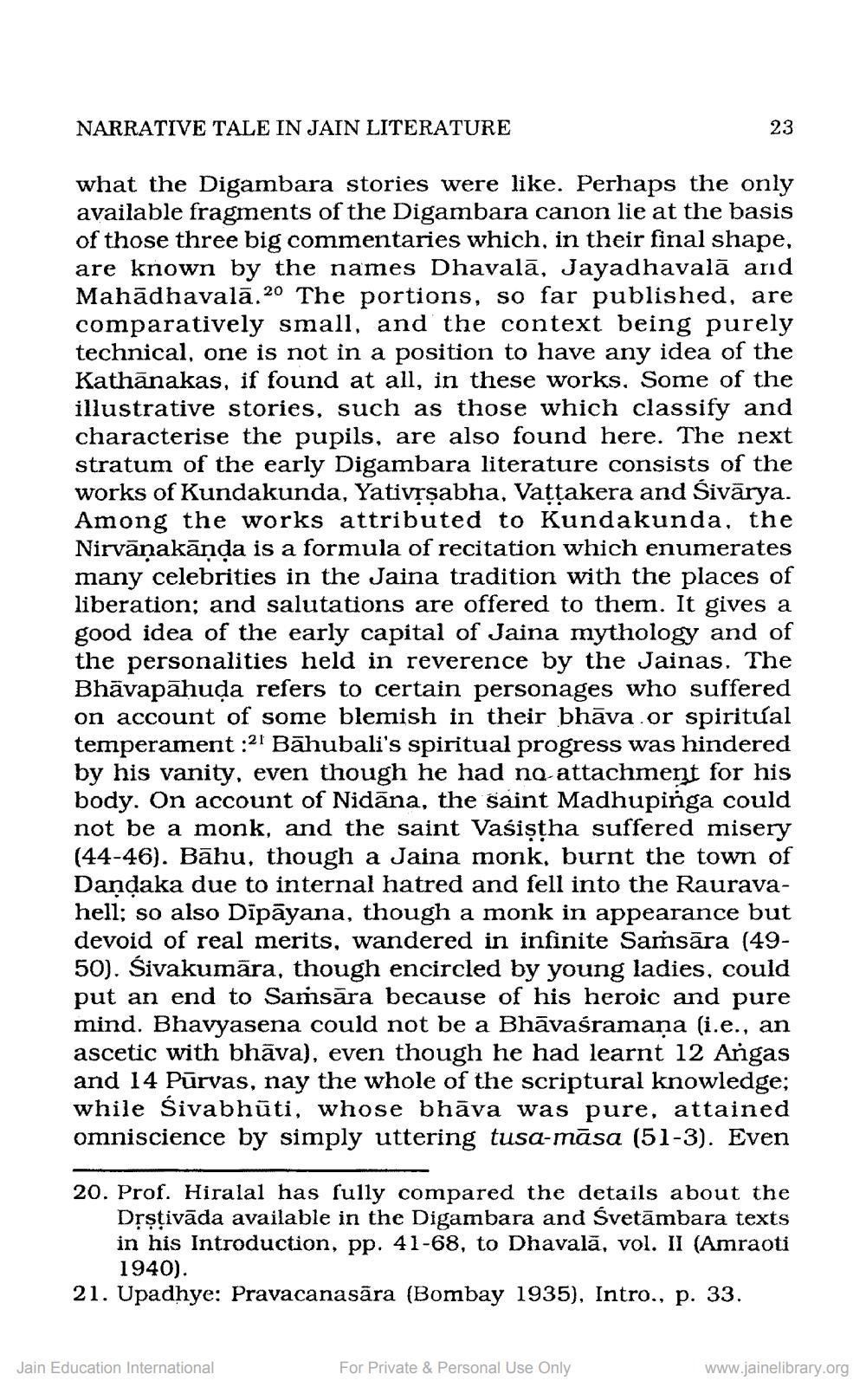________________
NARRATIVE TALE IN JAIN LITERATURE
23
what the Digambara stories were like. Perhaps the only available fragments of the Digambara canon lie at the basis of those three big commentaries which, in their final shape, are known by the names Dhavalā, Jayadhavalā and Mahādhavalā.20 The portions, so far published, are comparatively small, and the context being purely technical, one is not in a position to have any idea of the Kathānakas, if found at all, in these works. Some of the illustrative stories, such as those which classify and characterise the pupils, are also found here. The next stratum of the early Digambara literature consists of the works of Kundakunda, Yativrşabha, Vattakera and Sivārya. Among the works attributed to Kundakunda, the Nirvänakānda is a formula of recitation which enumerates many celebrities in the Jaina tradition with the places of liberation; and salutations are offered to them. It gives a good idea of the early capital of Jaina mythology and of the personalities held in reverence by the Jainas, The Bhāvapāhuda refers to certain personages who suffered on account of some blemish in their bhāva.or spiritual temperament:21 Bāhubali's spiritual progress was hindered by his vanity, even though he had ne-attachment for his body. On account of Nidāna, the saint Madhupinga could not be a monk, and the saint Vašiştha suffered misery (44-46). Bāhu, though a Jaina monk, burnt the town of Dandaka due to internal hatred and fell into the Rauravahell; so also Dīpāyana, though a monk in appearance but devoid of real merits, wandered in infinite Samsāra (4950). Śivakumāra, though encircled by young ladies, could put an end to Samsāra because of his heroic and pure mind. Bhavyasena could not be a Bhāvaśramana (i.e., an ascetic with bhāva), even though he had learnt 12 Angas and 14 Pürvas, nay the whole of the scriptural knowledge; while Śivabhūti, whose bhāva was pure, attained omniscience by simply uttering tusa-māsa (51-3). Even
20. Prof. Hiralal has fully compared the details about the
Drstivāda available in the Digambara and Svetāmbara texts in his Introduction, pp. 41-68, to Dhavalā, vol. II (Amraoti
1940). 21. Upadhye: Pravacanasāra (Bombay 1935), Intro., p. 33.
Jain Education International
For Private & Personal Use Only
www.jainelibrary.org




